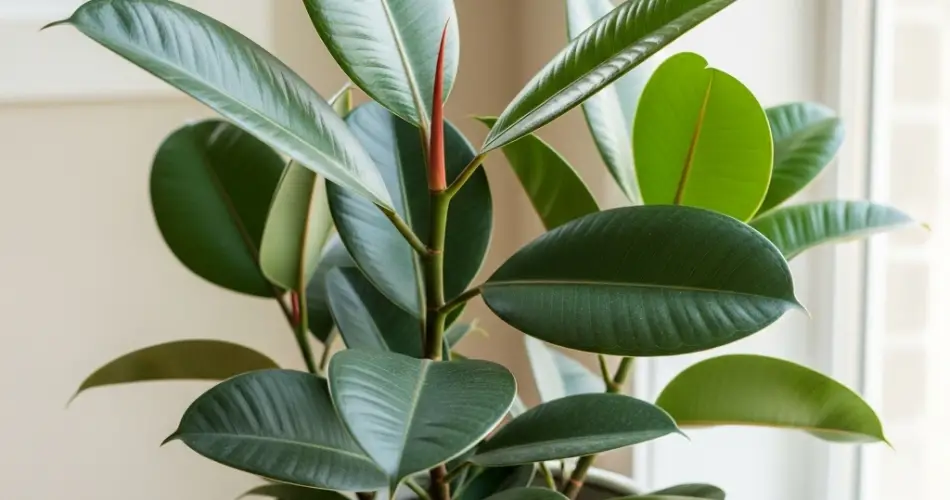Rubber plants (Ficus elastica) are beloved houseplants known for their thick, glossy leaves and upright, tree-like growth. They’re relatively low-maintenance, but one of the most important factors for long-term health is choosing the right soil. A proper soil mix gives your rubber plant the support it needs to grow strong while allowing air and water to move freely around the roots.
Whether you’re repotting a mature plant or starting a new one, understanding the best soil mix will help you avoid common problems like root rot, slow growth, or yellowing leaves. Here’s a detailed guide to creating and maintaining the ideal soil mix for your rubber plant.
Why Soil Choice Matters
Rubber plants are native to the tropical forests of Southeast Asia, where they grow in loose, well-drained soil rich in organic matter. Indoors, they require a similar balance—soil that holds moisture but drains well enough to prevent waterlogged roots.
Poor soil can lead to:
-
Compaction, which restricts oxygen to the roots
-
Excess moisture retention, leading to root rot
-
Nutrient deficiencies, especially in overly sandy or sterile mixes
By choosing or creating the right mix, your plant can grow healthy roots, absorb nutrients efficiently, and thrive for years.
Key Characteristics of the Ideal Rubber Plant Soil
For a rubber plant, you want a soil mix that has the following properties:
-
Good Drainage – Water should flow freely through the soil and out of the drainage holes.
-
Moisture Retention – The mix should stay lightly moist but not soggy.
-
Aeration – Roots need oxygen to thrive; compacted soil suffocates them.
-
Nutrient-Rich – A balance of organic materials will help fuel plant growth.
Best Soil Components for Rubber Plants
You can purchase a suitable pre-made soil or mix your own using these components:
1. Potting Soil (Base)
Standard houseplant potting soil is a good foundation but is often too dense on its own. It retains moisture but may need to be amended for improved aeration.
-
Use 2 parts potting soil as your base.
2. Perlite or Pumice
These materials improve drainage and aeration. Perlite is lightweight and porous, while pumice is a bit heavier and provides similar benefits.
-
Add 1 part perlite or pumice to help prevent compacted soil and root rot.
3. Coconut Coir or Peat Moss
These materials retain moisture without becoming soggy. They also help the soil stay light and airy.
-
Add 1 part coco coir (sustainable option) or peat moss for water retention and structure.
4. Pine Bark or Orchid Bark
Bark chunks provide structure, improve drainage, and help mimic the rubber plant’s natural environment.
-
Add ½ to 1 part pine bark for better drainage and texture.
DIY Rubber Plant Soil Recipe
Here’s a simple DIY soil mix that works well for most rubber plants:
-
2 parts all-purpose potting soil
-
1 part perlite or pumice
-
1 part coconut coir or peat moss
-
½ to 1 part pine bark
Mix these ingredients thoroughly before use. If the mix feels too heavy or retains too much moisture, increase the perlite slightly. If it dries out too quickly, add a little more coir or potting soil.
Store-Bought Alternatives
If you prefer a ready-made option, look for:
-
Aroid mixes (designed for plants like Monstera and Philodendron)
-
Cactus and succulent soil blended with some organic potting mix
-
Indoor plant soils labeled as “fast-draining” or “well-aerated”
Even store-bought mixes can be improved by adding extra perlite or bark for enhanced drainage.
Repotting Tips
When repotting your rubber plant:
-
Choose a pot with drainage holes.
-
Loosen the root ball gently before placing it in the new soil.
-
Water thoroughly after repotting, then allow the soil to dry slightly before watering again.
-
Avoid using a pot that is too large; it should only be 1–2 inches wider than the old one.
Repot every 1–2 years, preferably in spring or early summer when the plant is actively growing.
Common Soil-Related Problems
-
Droopy leaves and soggy soil = poor drainage or overwatering
-
Yellowing leaves = waterlogged roots or nutrient imbalance
-
Stunted growth = compacted soil or lack of aeration
Adjust your soil mix or watering habits as needed to correct these issues.
Conclusion
Rubber plants are resilient, but the right soil mix makes all the difference in how well they grow indoors. A well-draining, nutrient-rich blend with good aeration will keep roots healthy and support lush foliage. Whether you go for a DIY mix or an amended store-bought option, your rubber plant will thank you with vibrant, glossy leaves and steady growth.
By paying attention to the foundation—soil—you’re setting your rubber plant up for success from the roots up.



